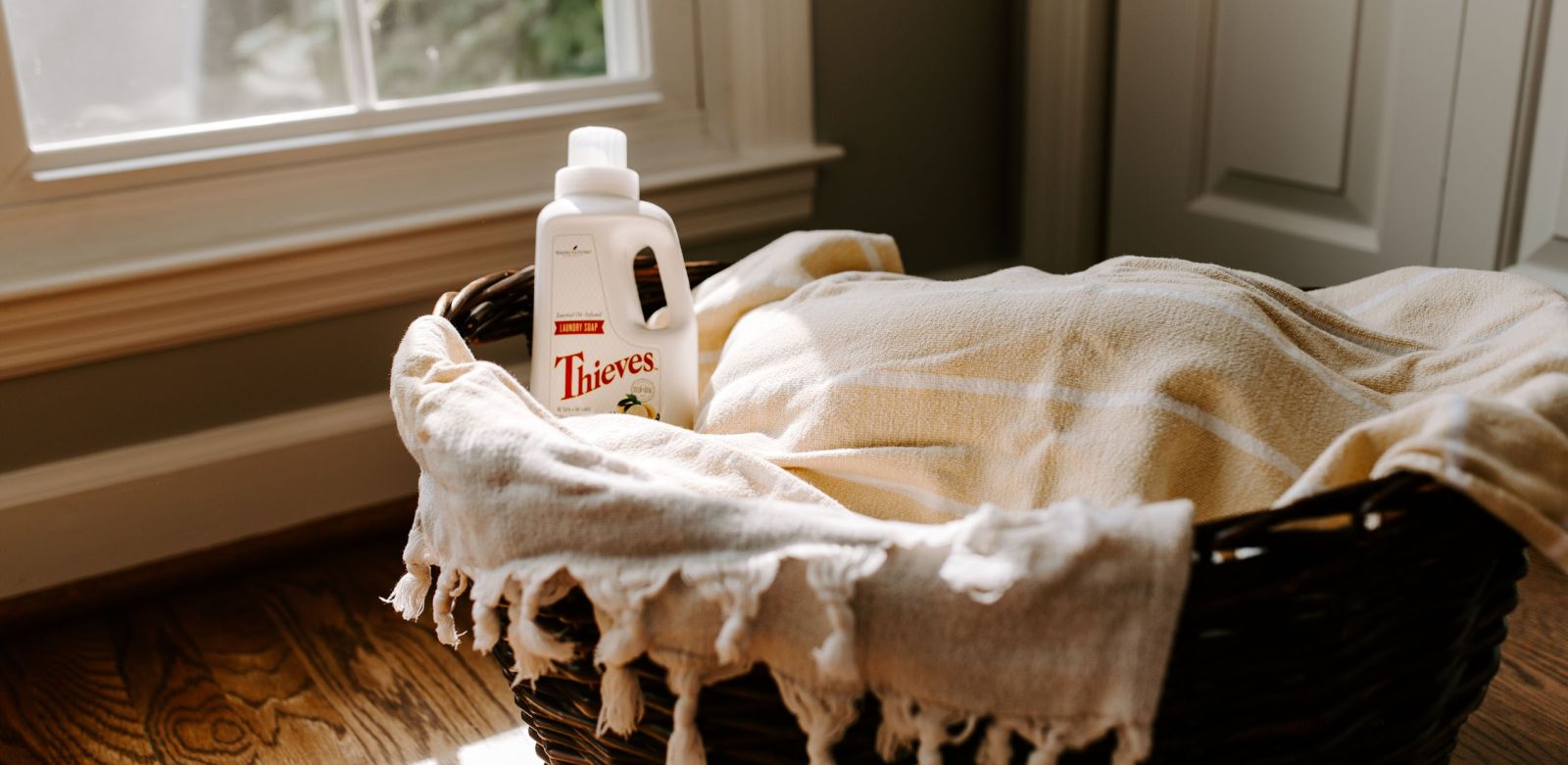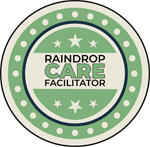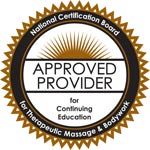This website uses cookies so that we can provide you with the best user experience possible. Cookie information is stored in your browser and performs functions such as recognising you when you return to our website and helping our team to understand which sections of the website you find most interesting and useful.
The Case for Thieves vs. Windex™ – Volume 8, Number 6
Please feel free to share this newsletter!


Raindrop Messenger
Official Newsletter of CARE
The Center for Aromatherapy Research and Education
12923 BCR 800, Marble Hill, Missouri USA 63764
(573) 238-4846
NOTE: The information in this newsletter is intended for education purposes only. It is not provided in order to diagnose, prescribe, or treat any disease, illness, or injured condition of the body or mind. Anyone suffering from any disease, illness, or injury should consult with a physician or other appropriate licensed health care professional.
The Case for Thieves vs. Windex™
Originally Posted November – December 2010
1. The Case for Thieves vs. Windex™
~^~By Gloria Miller
Now that the holiday season is approaching, most of us are starting to focus on the tradition of getting our homes “sparkling clean.” But what kind of products to use — or NOT to use, and why? I’d like to make the case for Thieves Household Cleaner (which, I admit, has an odd-sounding name), by contrasting it with a popular over-the-counter cleaner (with a most delightful-sounding name): Crystal Rain Windex™. (Aaahh. . . Lovely purple color, and the name makes us want to run barefoot through the dewdrops, right? Well, read on. . .)
Nobody would dream of spraying food with Windex, but they do spray various surfaces in their home with it — including sinks and countertops — which come in contact with food, and refrigerator door handles, which come in contact with skin.
Let’s take a few seconds to find out what they (and their family and pets) will be inhaling, and what kind of chemicals will be left behind on surfaces. There’s not much printed on the label, so I visited the Windex.com website for a closer look, then checked out the ingredients on Wikipedia.
Here are some of the ingredients in Crystal Rain Windex, what the maker has to say about them, and what they really are.
The Windex website lists 2-Methoxyethanol (also called Ethylene glycol monomethyl ether) and describes it as “a cleaning agent that removes dirt and soils.” Just what we want, right?
2-Methoxyethanol is toxic to the bone marrow and testicles. Workers exposed to high levels are at risk for granulocytopenia (reduction in certain types of white blood cells), macrocytic anemia (abnormally large red corpuscles usually caused by B-12 deficiency), oligospermia (shortage of sperm), and azoospermia (absence of sperm). Uh-oh. . .
The Windex website lists Ethanolamine, described as “a cleaning agent that removes dirt and soils.” Again, this sounds good. Ethanolamine is a toxic, flammable, corrosive, colorless, viscous liquid with an odor similar to that of ammonia. It is an iritant to the eyes, skin, and respiratory system. Overexposure causes lethargy. What!? . . . No wonder people get tired when they clean all day with Windex. Ouch! And P.U.!
Ethoxylated alcohol, another ingredient, is listed on the Windex website as “a cleaning agent that removes dirt and deposits.” O – o – okaaay. . .
Ethoxylated alcohol has been controversial because of its widespread use and the toxicity to aquatic life after it’s degradation. (Is this what the maker means by “green???”) By the way, some ethoxylated alcohols are called PEGs, or polyethylene glycols. Ever heard of them? PEGs are a class of useful compounds of molecular weights ranging from 190 to 9000 atomic mass units that vary in texture from viscous liquids to waxy solids. The Merck Index says PEGS can be considered as being of “low toxicity.” (Regarding toxicity, “no” is better than “low” and Thieves Household Cleaner has “no toxicity.”)
Anyhow, PEGs are found in all kinds of over-the-counter products from garage floor cleaners, cosmetics, and eye drops, to paints, paper coatings, commercial foods and food products. Wikipedia says “PEGs are nephrotoxic (damaging to the kidneys) if applied to damaged skin. (Is that what they mean by “low toxicity?) Pesonally, I’d rather protect my kidneys than put them at risk for the sake of a shiny countertop.
Now for the mystery ingredient, Polyquart® Ampho 149, also said to be “a cleaning agent that removes dirt and soils.” The name tells you it is a synthetic substance that does not exist in nature with which our bodies were not designed to easily metabolize and eliminate. Polyquart® Ampho 149 is a registered trademark of Cognis GmbH, which is the same as saying, “No way will we tell you what’s in it.” Hmmm. . .I wonder why. . .
No place does it say whether these chemicals in combination might be even more dangerous. The company isn’t required to test them that way, so they don’t — or if they did, they aren’t telling us the outcome. (Call me a worry-wart, but I’m willing to bet mixing them together doesn’t make them any less toxic.)
There are a few other ingredients, including artificial colors. I didn’t check them out because I believe the above would be enough to convince ANYONE to switch to Young Living’s Thieves Household Cleaner. (Oh, and water, which you can get by turning on a faucet.)
But if someone still needs more convincing, consider this: Crystal Rain Windex costs about $3.00 per quart.
Thieves Household Cleaner, mixed to “Medium Degreasing” concentration, costs about thirty cents a quart. It comes highly concentrated, so you add your own water.
Thieves Household Cleaner is totally non-toxic — so safe that a small child could drink it right out of the bottle and not be harmed. Full-strength, it will clean burned-on gunk off the bottom of an oven. To clean glass, just dilute it further with some white vinegar, which makes it even more of a bargain.
But even if someone doesn’t care about paying ten times more for Windex, why would they pay a company any amount on toxins? How “clean” will their house be, with a film of toxins on every surface?
Thieves Household Cleaner is antiseptic, anti-bacterial, anti-fungal (great for destroying mold and mildew in tiled surfaces!) It’s even antiviral. It contains 100% pure, therapeutic-grade essential oils of Clove, Cinnamon, Lemon, Eucalyptus radiata, and Rosemary, but NO harmful chemicals. So besides everything being sanitary AND safe, your house will smell wonderful.
Breathing Thieves cleaner is pleasant and boosts your health. The makers of Windex can’t claim that.I count it an added bonus when, after cleaning all day with Thieves cleaner, my hands feel better than when I started! And, oddly enough, the water I used will be dirty, but the rag or sponge is fairly clean. (Go figure!)
If you haven’t already, I hope you will “make the switch” to Thieves Household Cleaner. Do it for health’s sake AND for your budget. It comes in a 14.4 ounce size (YL item #3743), but if you want to save even more money, get the two quart size (YL item #4475).
NOTE: Gloria Miller is an Executive Young Living Distrbutor who practices and teaches Raindrop Technique in Chillicothe, Missouri.
~^~^~^~^~^~^~^~^~^~^~^~^~^~^~^~
2. God’s Breath
~^~by David Stewart, PhD
God’s Breath
The fragrances of flowers,
Of fields, and of the trees
Exhaled as God’s own breathing
As wafted on a breeze
Inhaled by us, his children
To mingle with our own
The taking of His likeness
Into our flesh and bone
The healing of the nations
By oils of stems and leaves
Embracing Him in silence
In resonance we breathe
Vibrations of the Master
God’s molecules of love
The essence of creation
Distilled from heav’n above
Essential oils of living
God’s nature to imbue
With joy and peace and courage
Uplifting me and you.
As God breathed life to Adam
God’s oils bring life to heal
In sweet aromas fragrant
His presence we do feel
cf. Genesis 2:7; Psalm 33:6; Job 33:4; John 20:22; Revelation 22:2
~^~^~^~^~^~^~^~^~^~^~^~^~^~^~
3. Why Our Great-Grandparents were “Happier”
~^~Adapted by David Stewart from material provided by Bob Krone, YL Distributor from Cape Girardeau, Missouri
Today we are prone not to trust the U.S. Food and Drug Administration(FDA). While they were commissioned by the U.S. Congress just over a hundred years ago to protect us from fraudulent and potentially dangerous foods and drugs, today it often seems they are more interested in protecting the vested interests of companies whose foods and potions are far from healthy and, some cases, can make you sick and even cause death. Just listen to the disclaimers on television when advertising over-the-counter or prescription drugs and you know what I mean.
However, before the FDA, there was a real problem to be addressed in the country. The driving factor behind establising the FDA was because of the plethora of medicines and elixers of the 19th century that really were faudulent or dangerous and people were being duped and harmed. For example, there was a weight-loss product sold sold on pharmacy shelves that actually contained tapeworm eggs. So some sort of regulation was certainly in order. But are we better off today because of the FDA, or not?
Anyhow, here are some examples of items freely available to the public during your great-greatgrandparents days which may explain their fond memories of the “Good Old Days,” even though thir life spans were shorter.
Bayer’s Heroin
Between 1890 and 1910 heroin was sold to the public by Friedrich Bayer & Co., a German company later made famous for its aspirin, as a non-addictive substitute for morphine. It was also used to treat children suffering with a stong cough.
Coca Wine
Metcalf’s Coca Wine claiming to be made from “fresh coca leaves and the purest wine,” was one of a large variety of wines containing cocaine on the market. It was recommended for “neuralgia, sleeplessness, despondency, as well as fatigue of mind or body.” Distributed by Theodore Metcalf & Co., of Boston, Massachusetts, it promised to be “A Pleasant tonic and Invigorator.” While making you “happy,” it could also work as “a medicinal treatment.”
Mariani Wine
In 1875 Mariani Wine was the most famous coca wine of its time. Claiming that it was especially effective for “influenza” it promised to “quickly restore health, strength, energy, and vitality as well as “hasten convalescence.” Pope Leo XIII used to carry a bottle with him at all times and allowed his smiling image to be featured on the label. The Pope was so pleased, he awarded Angelo Mariani, formulator of the libation, with a Vatican Gold Medal. Mariani Wine was distributed by Wilcox & Co. of London.
Maltine With Coca Wine
We all know that Malt has healthy attributes and has been marketed in many forms. Maltine was a 19th century tonic made by the Maltine Manufacturing Co. of New York that contained coca wine. Its lable boasted that Maltinehad won ten Gold Medals.” Suggested dosage for adults was one full glass with or after every meal while children should only take half a glass.
Cocaine and Quinine
While cocaine has its own benefits as well as less desirable effects, quinine, an effective treatment for malaria, is also teratogenic (causing birth defects) and must be administered with discretion. The C.F. Boehringer & Soehne Company of Mannheim, Germany, used to boast of themselves as “The largest makers of quinine and cocaine in the world.”
Opium for Asthma
The National Vaporizer Co., of Kalamazoo, Michigan, sold a product called “Vapor-OL Treatment No. 6” which contained “not more than 40% alcohol and 3 grains of opium per fluid ounce.” It was recommended for “asthma and other spasmodic affections.” A bottle cost 50 cents. With that much alcohol and opium, even if it didn’t cure you, you didn’t care.
Cocain Tablets
A company in France, V. Vanderbroek Pharmacien, used to sell mint flavored pills containing cocain for its anesthetic and antiseptic properties. It was highly recommended for stage actors, singers, techers, and preachers to achieve maximum performance. Great to “smooth” the voice.
Cocain Drops for Toothaches
Lloyd Manufacturing or Albany, New York had an “Instantaneous Cure” for a toothache–“Cocaine Tothache Drops.” It was very popular for children in the late 1800s. Not only did they relieve pain, they made the children very happy.
Opium for Newborns
An American company, Sickney and Poor’s, Inc., used to sell a 40% alcolohol tincture of opium called “Pure Paregoric,” which was listed in the U.S. Pharamacopia of remedies at the time. The dosages on the bottle were as follows: Five days old, 5 drops; Two weeks old: 8 drops; Five years old, 25 drops; Adults, 1 teaspoonful. Thus you could insure your baby to sleep well through the night, and yourself as well.
So there you have it. It seems as though yesterday’s remedies were designed to keep you stoned, from cradle to grave. But with todays abundance of antidepressants, pain killers, and mind numbing drugs approved by the FDA, are we any different than the generation of our Great Greatgrandparents? The FDA sometimes seems to protect the toxic and ban the beneficial, favoring synthetic substances over natural ones like supplements, herbs, and essential oils.
You decide if we are better off with an FDA or not. We do live longer, and that is a fact. “But how and why?” is the question.
THE RAINDROP MESSENGER
Official Newsletter of CARE
The Center for Aromatherapy Research and Education
12923 BCR 800, Marble Hill, Missouri USA 63764
(573) 238-4846
NOTE: The information in this newsletter is intended for education purposes only. It is not provided in order to diagnose, prescribe, or treat any disease, illness, or injured condition of the body or mind. Anyone suffering from any disease, illness, or injury should consult with a physician or other appropriate licensed health care professional.
The Care Calendar
Topics covered in the Raindrop Messenger:
- Advanced Bible Oils
- AFNOR
- Allergy Season
- Allopathy
- ALOES/SANDALWOOD
- Ancient secrets of essential oils
- Annual CCI Summit
- Anointing
- Aroma Life
- Aromatherapist
- Aromatherapy
- Aromatherapy Certification
- Arthritis
- Believer
- BIBLE OILS
- Biblical Oils
- Birch Oil
- Black Widow
- Body Systems
- cancer
- CARE Chemistry
- CARE Classes
- CARE INTENSIVES
- CARE Seminars
- CARE Summit 2024!
- CARE training
- Carvacrol
- CCI Certification
- CCI Summit 2024
- CEDARWOOD
- Center for Aromatherapy Research and Education
- Chakras
- Charging for Raindrop
- Chemistry
- Chemistry of Essential Oils
- Chemistry of Essential Oils Made Simple
- Chemotypes
- cleanses
- Clover
- Continuing Education Credit
- CYPRESS
- Dangers Of Prescription Drugs
- Detoxifiers
- Developing Gratitude
- DI GIZE
- DIAMOND
- Do All You Can
- Earthquakes
- Elderberry
- ELECTROMAGNETIC FIELD
- EM FIELD
- Emotional Release
- Energize
- ENZYMES
- Essential Oils
- ESSENTIAL OILS FOR INTUITIVE PURPOSES
- Essiac tea
- Exodus Supplement
- Feelings Kit
- Flu
- Focus
- Frankincense
- FREQUENCES
- GALBANUM
- Garlic
- Gary Young
- Ginger
- Goals
- god's love
- Gold
- Gold Frankincense Myrrh
- Grapefruit
- Growth
- Habits
- Harmonies Melodies & Symphonies with Essential Oils
- Heal Your Body
- Healing
- Healing Oils Of The Bible
- Helichrysum
- HERXING
- History of Anointing Oils
- Holy Anointing Oil
- Holy Incense
- Homeopathy
- Homeostatic Intelligence
- HYSSOP
- IASP
- Institute for Energy Wellness Studies
- Integrated Aromatic Science Practitioner
- Joy
- laughter
- Lavender
- Learn Raindrop
- Lee Stewart
- Legal
- lemongrass
- linen
- Liver
- Look Ahead.
- Love
- Lyme Disease
- Mind-Body Connection
- Mint
- Myrrh
- NAT
- Natural
- Natural Molecules
- Neuro-Auricular Technique
- never give up
- new age
- Ningxia
- Ningxia Red
- Non-Nutritive
- Nova Vita
- Ocotea Oil
- Oils of ancient scripture
- Onycha
- ORAC SCALE
- Oregano
- Oregano oil
- Overcoming Diabetes
- patchouly
- Peruvian Chocolate
- Pest Control
- pheromones
- phosphoric acid
- Photoxicity
- POO-ROMATHERAPY
- Practitioner
- Preparation
- Protocel
- Pure Therapeutic Grade Essential Oil
- Quantum Physics
- Raindrop
- Raindrop certification
- Raindrop Classes
- Raindrop instructors
- Raindrop teachers
- Raindrop Technique
- Raindrop Technique Training
- Raindrop Training
- Raindrop Without a License
- RC Blend
- ringing in the ears
- Rose Essential Oil
- ROSE OF SHARON/CISTUS
- Rose Oil
- Safe Insect Repellants
- scar-b-gone
- Science Of Essential Oils Made Simple
- Sensitivities to Essential Oils
- sick building syndrome
- SPIKENARD
- Stay Positive
- staying healthy
- Success
- Supervisor Training
- Synthetic Compounds
- tansy
- Tea Tree
- The Blood Brain Barrier
- the Ecuador Clinic
- THE FIRST IMPRESSION TECHNIQUE
- the Mind-Body Connection
- THE PRAYER OF JABEZ
- The Quantum Connection
- THE SLEEP TECHNIQUE
- Therapeutic Grade
- Thieves Household Cleaner
- Thieves Oil
- Thyme
- Thyme Oil
- Tinnitus
- Tonya Peterson
- Transformation
- Transformation Oil Blend
- Twelve Questions to Ask Those Who Invite You to Join Another Company
- unresolved emotions
- valor blend
- Vitaflex
- water
- Wealth and Spirituality
- Whole Body Wellness Retreat
- Wintergreen
- Wolfberries
- Ylang Ylang
- YLEO
- Young Living business
- Young Living Essential Oils
- Young Living Oils and Products
Shop this issue of the Raindrop Messenger
Read more issues of the Raindrop Messenger
In each issue of The Raindrop Messenger you will find articles and essays on a variety of topics related to health and longevity. Our hope is to be informative and, perhaps, inspiring to you for the benefit of your physical, mental, social, emotional, and spiritual life. The Raindrop Messenger is also a friendly way of keeping you abreast of CARE’s ongoing programs, activities and helpful books and videos.
The articles published in The Raindrop Messenger and in this archive are not copyrighted. You are encouraged to copy them, reprint them, and share them with friends. We would appreciate acknowledgment of their source by a statement to the effect.
By submitting this form, you are consenting to receive marketing emails from: The Center for Aromatherapy Research and Education. You can revoke your consent to receive emails at any time by using the SafeUnsubscribe® link, found at the bottom of every email. Emails are serviced by Constant Contact

I JUST WANT A RAINDROP!
Have a facilitator contact you!
The Center for Aromatherapy Research and Education, Inc. (CARE) and it's Certified Instructors have trained hundreds of Facilitators in the Raindrop Technique. Click here to get started.

Center for Aromatherapy Research and Education is approved by the National Certification Board for Therapeutic Massage and Bodywork (NCBTMB) as a continuing education Approved Provider.
CARE International Inc
12923 BCR 800
Marble Hill, MO 63764
Toll Free (800) 758-8629
Fax (573) 755-0365
Open 9:00 AM to 4:30 PM CST
Monday - Friday



